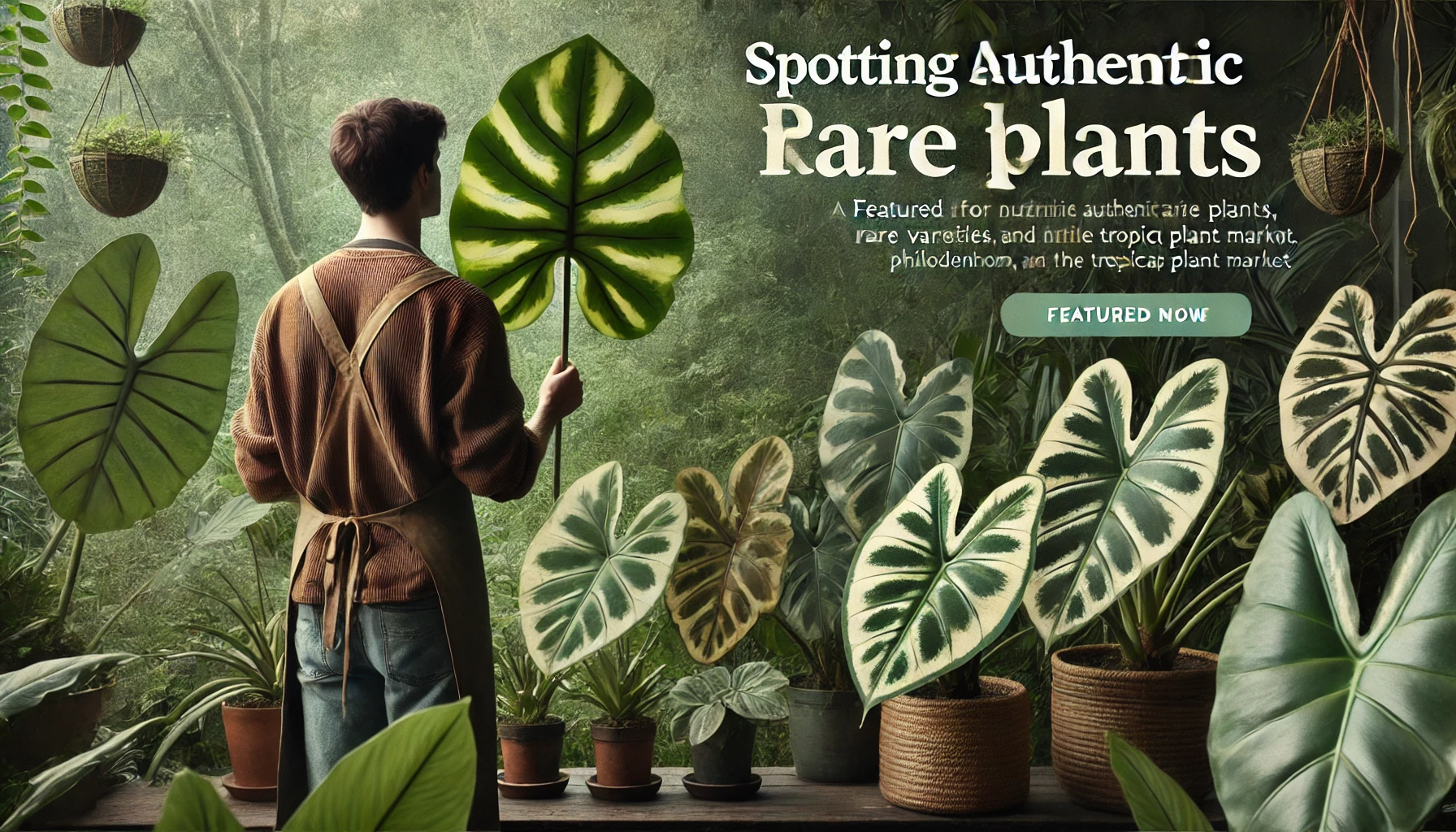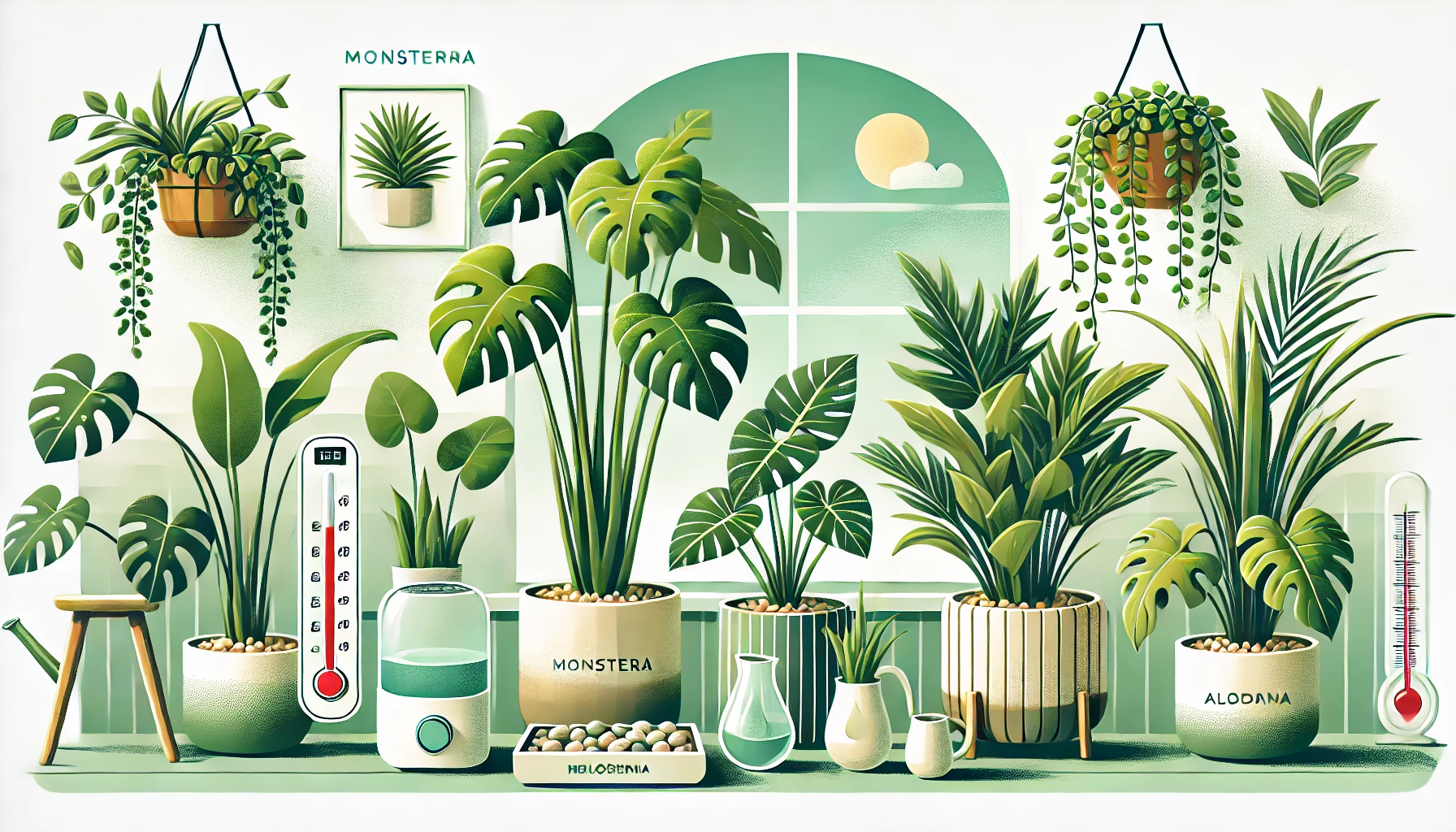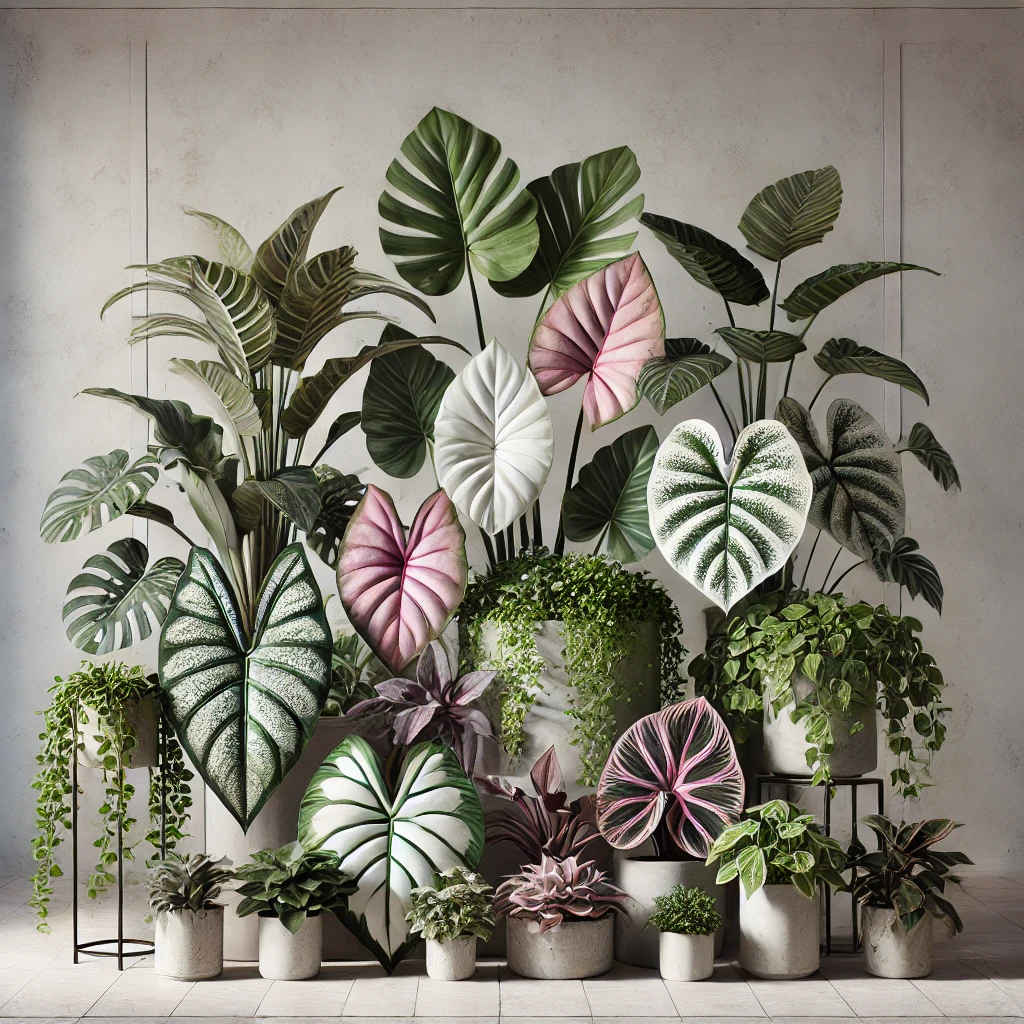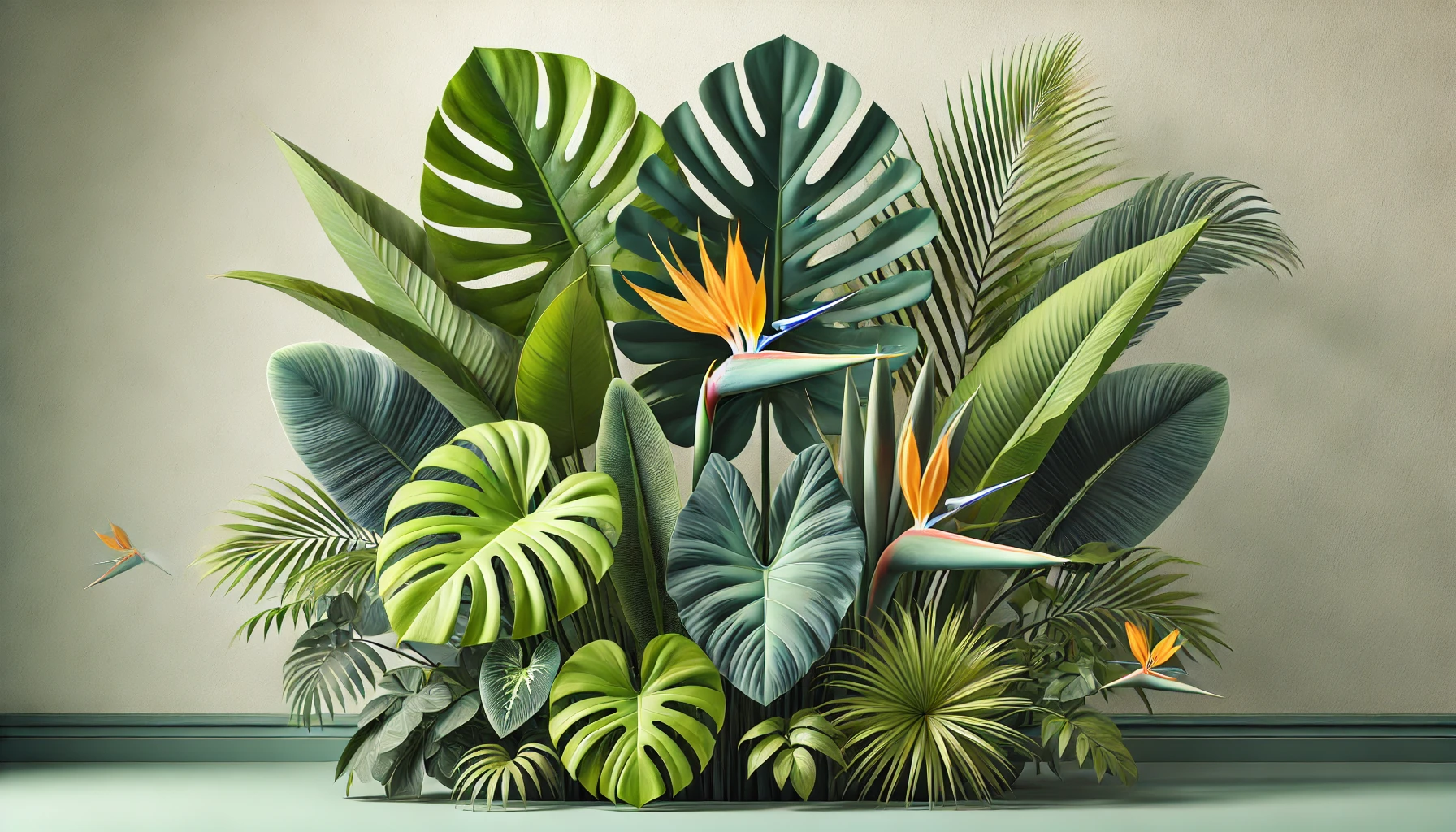The world of rare plants is filled with exotic beauties that stop the heart of any plant lover. If you have gone to shop for rare plants in the recent past, then you must know that it’s so easy to come across some look-alikes, misidentified species, or even imitations. As demand for a particular unique specimen grows, spotting an authentic rare plant is becoming increasingly challenging. With tropical plant trends going full bloom, one needs to be schooled on what to look for to avoid being misled.
In this article, I share some pro tips on how to spot an actually rare plant, what makes a plant “rare, and how to avoid fakes when diving into the tropical plant market. Whether you are a complete newbie or a seasoned collector, here is all you should know to make sure you get the real thing.
What is it that makes a plant rare?
Before diving into spotting authentic rare plants, let’s clarify what makes a plant “rare.” Several factors contribute to a plant’s rarity:
1. Limited Natural Habitat: Some plants only grow in specific regions with very particular climates. This makes them even more challenging to cultivate, yet in greater demand by the most avid collectors.
2. Low Propagation Rate: Plants that may take several years, or even decades, to mature and develop their distinguishing features will always be more valuable and difficult to access.
3. Unusual Features: Plants with unique colors, variegations, or patterns on the leaf would be included in the rare category, as most of the time they don’t occur in nature, or they may be challenging to propagate.
4. Conservation Status: Some of the species of rare plants are considered endangered, which can be yet another reason for their exclusivity. On the other hand, purchase plants from responsible sources to avoid encouraging illegal or unsustainable harvesting practices.
Why Spotting Authentic Rare Plants is Important
As rare plants gain popularity, many sellers have jumped on the trend. Unfortunately, this has given rise to a lot of imitations, mislabeling, and even artificially modified plants that look rare but aren’t. Being aware of how to identify truly rare plants is of prime importance in making good purchases, enabling natural biodiversity, and encouraging ethical sellers.
How to Distinguish Genuine Rare Plants in the Market
Now, let’s dive into some practical tips for spotting authentic rare plants, so you can shop confidently and avoid imitations.
1. Understand the Plant’s Natural Features
When it comes to spotting authentic rare plants, knowledge is your best defense. Understanding a plant’s natural features will help you recognize when something is off. For instance:
– Variegation: Many rare plants have natural variegation, which appears as light or dark patches on the leaves. Authentic variegation is usually symmetrical or has a natural flow, while fake variegation may look painted on or inconsistent.
– Leaf Shape and Size: Rare plants often have distinct leaf shapes and sizes. If you know that a particular plant typically has large, heart-shaped leaves, then a small, rounded-leaf version is likely an imitation or misidentified.
– Stem and Root Color: Some plants have unique stem or root colors that can be a giveaway. For example, a true Monstera Albo has a creamy white variegation on the leaves, while imposters might show a different shade or even artificially colored patches.
2. Check for Known Growth Patterns
Each plant has a growth pattern that reflects its species. Knowing these patterns is essential for spotting authentic rare plants. For example:
– Node Spacing: In plants like the Monstera, node spacing tells you a lot about the plant’s maturity. Shorter node spacing is often a sign of healthier, more mature plants. If a seller is advertising a rare Monstera but it has long, sparse nodes, you may be looking at a juvenile or a plant grown under subpar conditions.
– Leaf Orientation: Some rare plants, like the Alocasia ‘Frydek,’ have a particular leaf orientation. Authentic Alocasias typically have leaves that point upward or outward. If the plant’s leaves droop excessively, it may have been improperly cared for or mislabeled.
3. Beware of Artificial Variegation
One of the most common scams in the rare plant world is artificially variegated plants. Sellers may bleach, paint, or even dye plants to mimic natural variegation. While these methods can look convincing, they usually don’t last. Here’s how to spot them:
– Consistency: Authentic variegation is generally consistent throughout the plant, especially on new growth. If only one or two leaves are variegated and the rest are plain green, it could be artificial.
– Color: Artificially variegated plants often have overly bright white or yellow spots, while natural variegation tends to be a bit more muted and blends into the leaf’s natural color.
– Growth Over Time: If you have the chance to observe the plant over a few weeks, look for signs that the variegation is fading or washing off. This is a clear indication that the variegation is not natural.
4. Look for Authenticity Certificates
When buying from reputable sellers, especially for high-value plants, they may offer certificates of authenticity. These certificates are particularly common in online or specialty plant shops and can provide extra peace of mind. A reputable seller will usually offer detailed information about the plant’s origin and propagation history.

5. Research the Seller’s Reputation
In the world of spotting authentic rare plants, the reputation of the seller is crucial. Look for sellers that specialize in rare or tropical plants and who have good reviews. Here are a few things to look for:
• Detailed Listing: Genuine sellers tend to show a detailed listing for each plant regarding the scientific name, the requirements for the care of plants, and probable signs of maturity.
• Customer Reviews: These will give an inkling about the reliability and honesty of the seller from other enthusiasts who have ordered plants from them.
• Transparency: The ethical vendor will be forthcoming about the plants’ origins and if they are requiring some special conditions. They will even go as far as answering questions such as the history of the plant, from seed or grown from cuttings.
6. Use Online Plant Identification Tools
The online plant identifiers are very useful in case one doubts the authenticity of a particular plant. At this point, applications such as PlantSnap or PictureThis will be able to help one identify plants from pictures and other information like species, common look-alikes, and characteristics. Although these tools are far from perfect, it’s always a good starting point in trying to spot an authentic rare plant.
7. Join Plant Collector Communities
Plant collectors often have insider knowledge about where to find authentic rare plants, reputable sellers, and even red flags to watch out for. Joining online communities or plant groups on social media can connect you with people who share your passion and can offer valuable advice on spotting authentic rare plants. Plus, these groups are usually up-to-date on market trends, helping you avoid scams.
Red Flags When Buying Rare Plants
Knowing the signs of a fake rare plant will save you from making an expensive mistake. Some common red flags you should be aware of are listed below: Too-good-to-be-true prices of the plants- The normally rare plants are very expensive because their growth rate is so slow. When you find a price that is unbelievably low for a plant that normally fetches a high price, use extreme caution.
• Too Shiny Leaves: Some sellers use oils or sprays to create shine on the leaves. That is okay; most rare plants do have a sheen in them naturally. Too much shine in the leaves might mean interference. The actual rare plant will not have leaves that are too shiny.
• Bad Health of Plant: Most genuine rare plants are grown with a great deal of care and are well-cared-for in every aspect. Yellow leaves, broken stems, and insects and other infestations may mean a low-quality plant being sold as a rare plant.
How to Care for a True Rare Plant
Now that you have spotted one and acquired it, the next course of action would be to care for it accordingly. Most plants, especially rare ones, require special care to uphold their characteristic features.
Lighting
Rare tropical plants do great in bright indirect light. Avoid placing them in direct sun because it will burn the leaves of the plant. East windows or diffused light with gauzy curtains does the trick very well.
Humidity and Temperature
Most rare plants are native to humid tropical environments. Humidifiers or setting up your plant on a humidity tray can help simulate this. Keep the temperatures consistent but, if possible, between 65-85°F (18-29°C).
Soil and Watering
The soil for rare plants often needs to be well-draining-for example, with perlite or orchid bark-to avoid root rot. Water sparingly, letting the top inch of the soil dry out between each watering.
Conclusion
It’s Worth the Effort to Find the Real Deal in Rare Plants by Spotting Them. While the process of spotting authentic rare plants can be quite a challenge, it is definitely well worth it. Authentic rare plants bring beauty, uniqueness, and a sense of accomplishment to your collection. By learning natural features to identify, studying reputable sellers, and keeping your wits about you to avoid common scams, you will confidently be able to navigate the market in rare plants and enjoy your exotic finds for years to come.
Happy plant hunting, and may you find that perfect rare gem!



